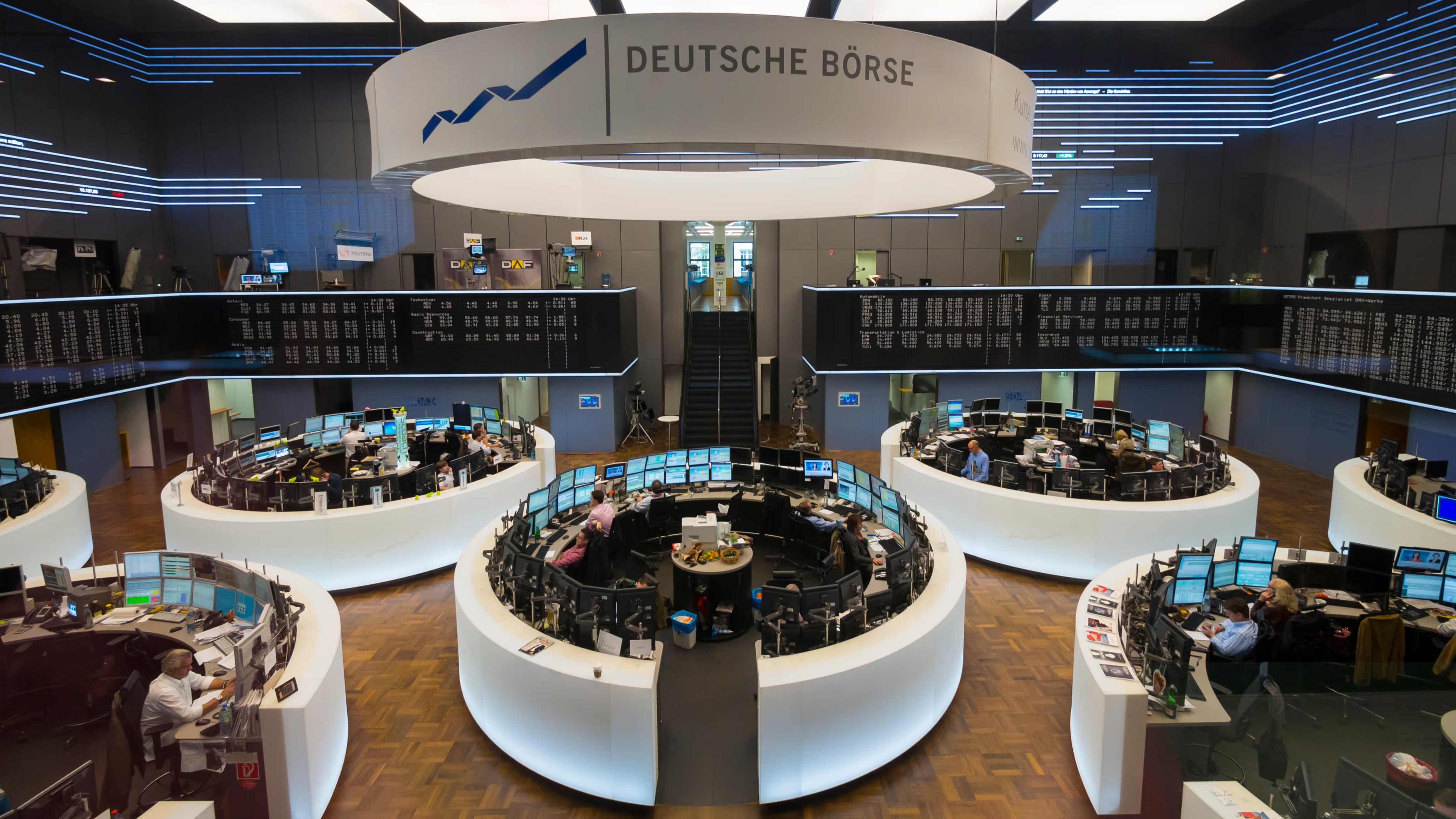Decentralized, digital, democratic: The changing stock market

In the media, journalists report on the trading floor every day and inform investors about the development of share prices or general economic events. However, trading on the trading floor is no longer the way it used to be. Find out how the trading world has changed in recent decades and why decentralized stock exchanges could be the future.
What actually is a trading venue?
In principle, a trading venue or stock exchange acts as an intermediary between buyers and sellers of goods, futures or financial assets. It facilitates and mediates transactions and ensures transparency and security. There are physical exchanges, where trading is conducted in person, and electronic exchanges, which allow trading using computer and network technologies.
The price of a share, for example, is defined by supply and demand. Market participants determine the money exchange rate (purchase price) and the ask price (selling price). The difference between these prices is the spread that results in a transaction when the buyer and seller agree.
Investors generally make profits by increasing the value of their investments. This happens when they buy a security whose price rises and then sell it again at a profit. But of course, losses due to price declines are also always possible. The volatility (the range of fluctuations) of the stock market depends on factors such as company news, general market sentiment and national and global economic developments.
There are one or more trading centers in almost every country worldwide. For example, the New York Stock Exchange (NYSE) and the NASDAQ in the USA, the London Stock Exchange (LSE) in Great Britain and Deutsche Börse in Frankfurt, Germany.
From parquet trading to high-frequency trading
But it was a long way from the historic commodity exchange to parquet trading and modern high-frequency trading. Already At the end of the 14th century, Antwerp was the center of international trade. Merchants purchased goods — especially spices — with the expectation that prices would rise in order to make a profit. Bonds were also traded. But the Antwerp Stock Exchange lost its importance as Amsterdam developed into the financial center in Europe.
Modern stock trading began in Amsterdam in 1611. The Dutch East India Company was the first publicly traded and, for many years, the only company whose shares were traded on the stock exchange. At the end of the 17th century, a group of merchants on Wall Street closed the Buttonwood Tree Agreement to steer trade there in an orderly manner. In short form, the document contained three provisions: The brokers were only allowed to trade among themselves, the auctions were eliminated and the commission was set at 0.25 percent. The Buttonwood Tree Agreement finally gave rise to the New York Stock Exchange. In 1896, the Dow Jones Industrial Average was created, followed by the S&P 500 in 1923.
It wasn't until 1969 that digital age on the Frankfurt Stock Exchange Move-in. With BÖGA, a computer system for processing stock exchange transactions, traders were able to process securities transactions electronically; shortly thereafter, transactions were also processed via telex via the stock exchange computer. About three years later, electronic trading finally began on the NASDAQ US stock exchange, which today clearly dominates events worldwide.
Virtual marketplaces also guarantee private investors international transactions, high liquidity, fair and transparent pricing, and eliminate misunderstandings between buyers and sellers. Deutsche Börse, for example, offers two trading venues: Xetra, a fully electronic platform that handles over 90% of German stock trading, and parquet trading at the Frankfurt Stock Exchange, where specialists assist with personal transactions — particularly for less frequently traded securities.
With the digital transformation of trading venues, the High-frequency trading (HFH) enables. This means trading using algorithms that execute hundreds of thousands of transactions within seconds and can generate billions in profits through speed advantages in the millisecond and microsecond range.
The future of stock exchange trading
A large proportion of orders on international stock exchanges now go through HFH. Over-the-counter (OTC) trading, in which securities are not bought and sold via stationary trading venues, is also increasing. The two big benefits of OTC are lower fees and longer trading hours. On the other hand, OTC trading is not regulated and involves higher risks.
However, there are likely to be further innovations in the trading sector in the future, particularly in the area of Decentralized Finance (DeFi). The most exciting developments include decentralized exchanges, as we already know them from crypto trading venues. Instead of relying on central market makers, as is the case with traditional stock exchanges, decentralized exchanges do not use an intermediate authority to process transactions. Instead, trading takes place via smart contracts — programs on the blockchain that automatically execute certain predefined rules.
Since decentralized exchanges (DEX, Decentralized Exchanges) are based on blockchain technology and are accessible anytime and anywhere, any user can become a liquidity provider and thus participate in the fees for providing liquidity. The special thing about a decentralized stock exchange is that the trading infrastructure is “democratically” operated by the users themselves. There is no longer a need for a central authority to regulate and control all transactions and services.



